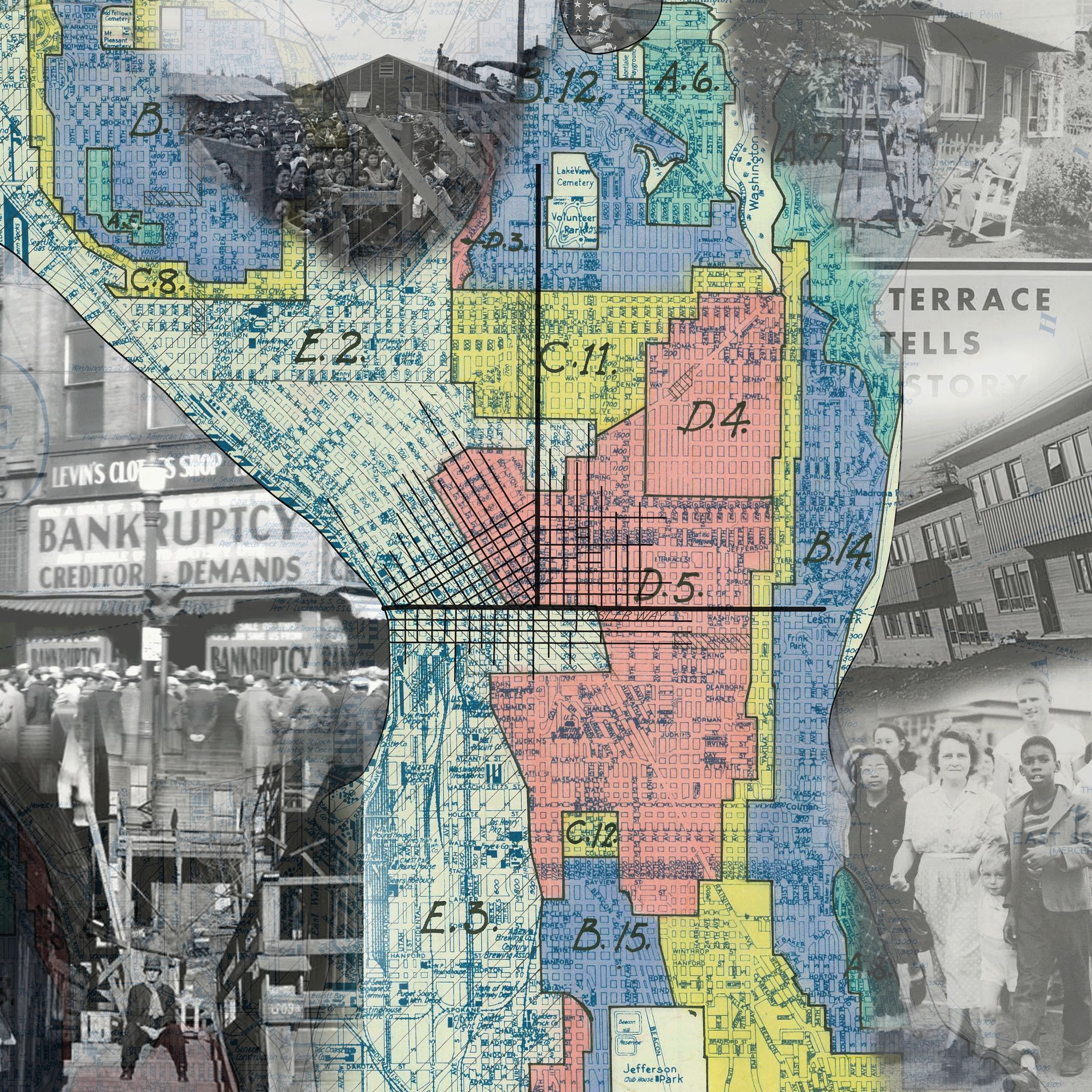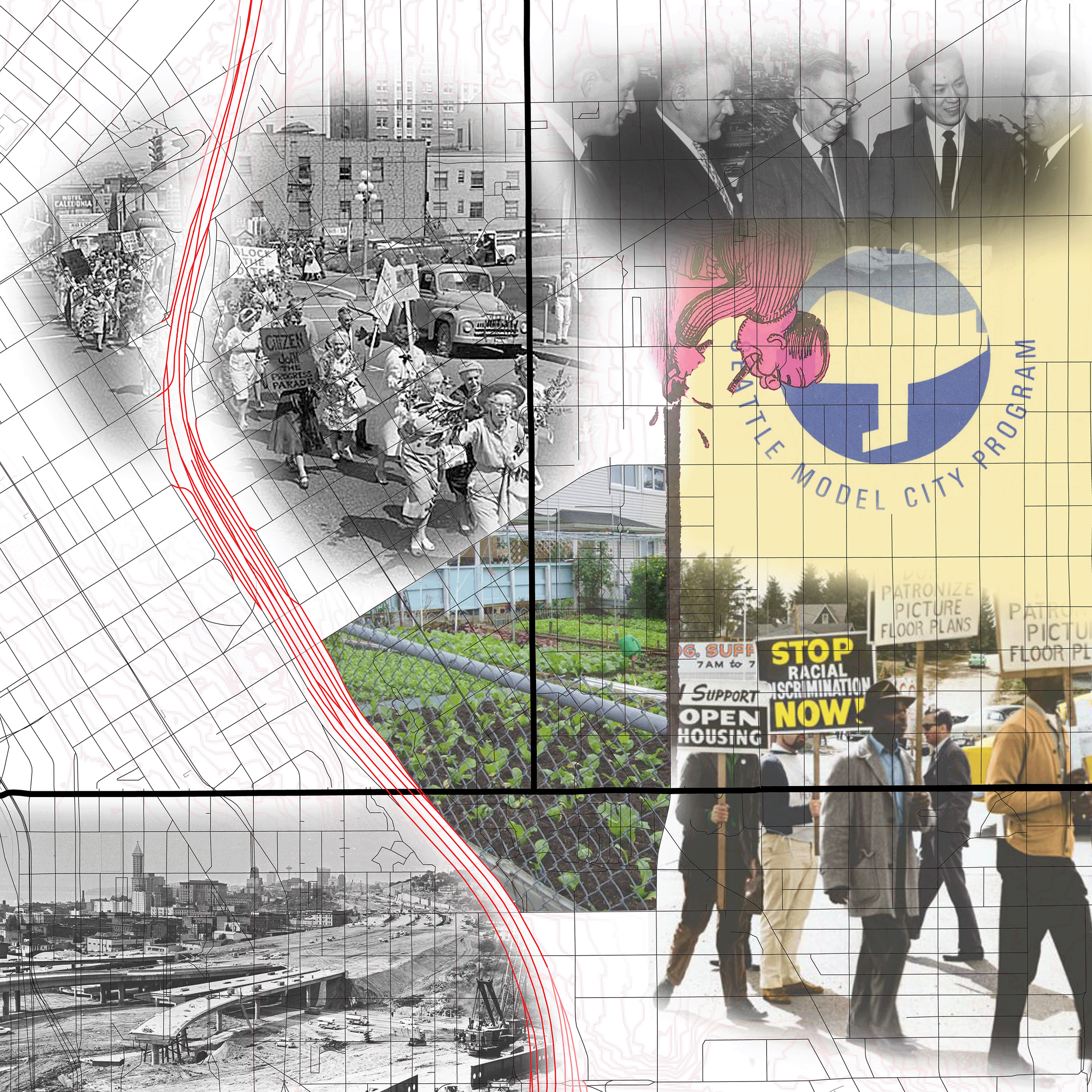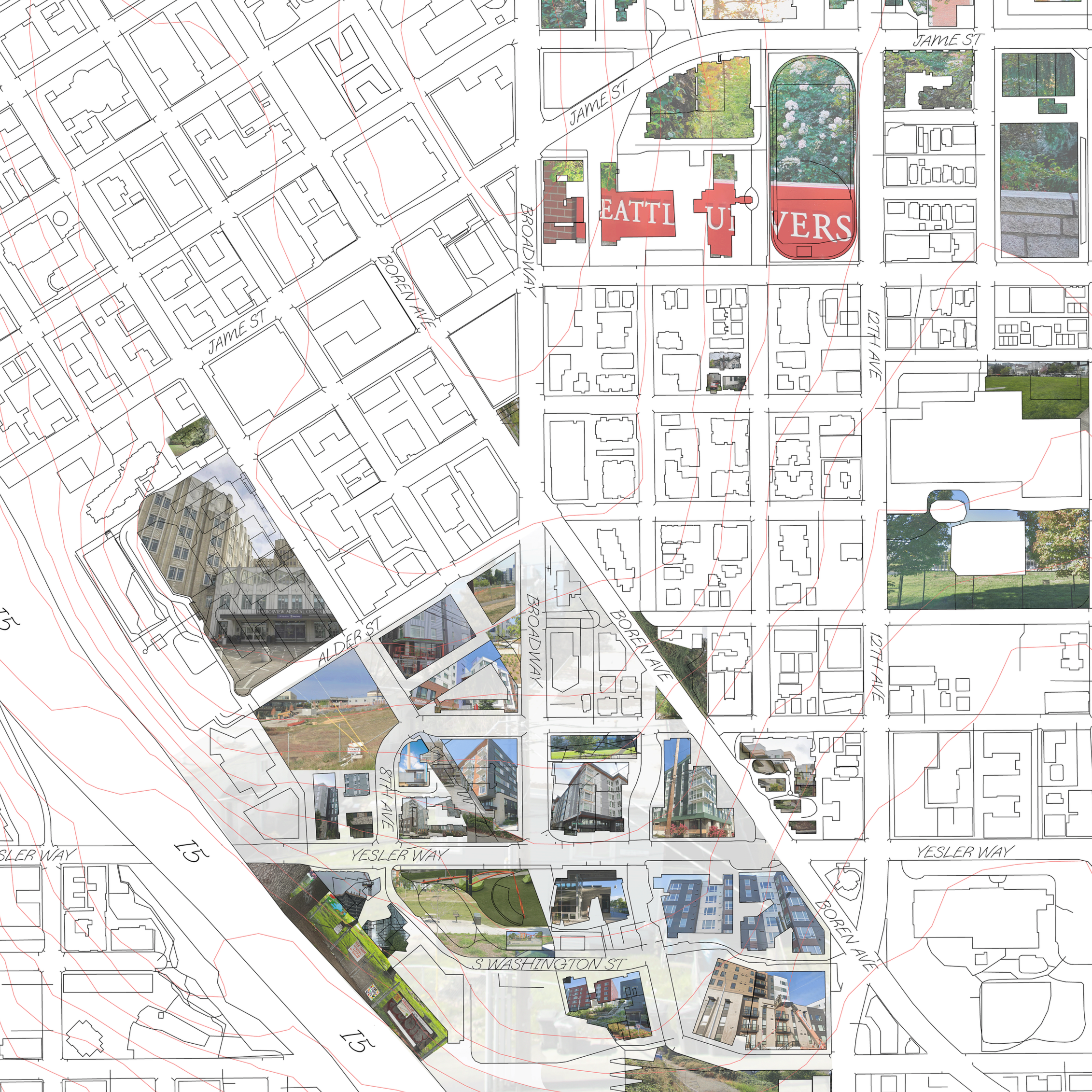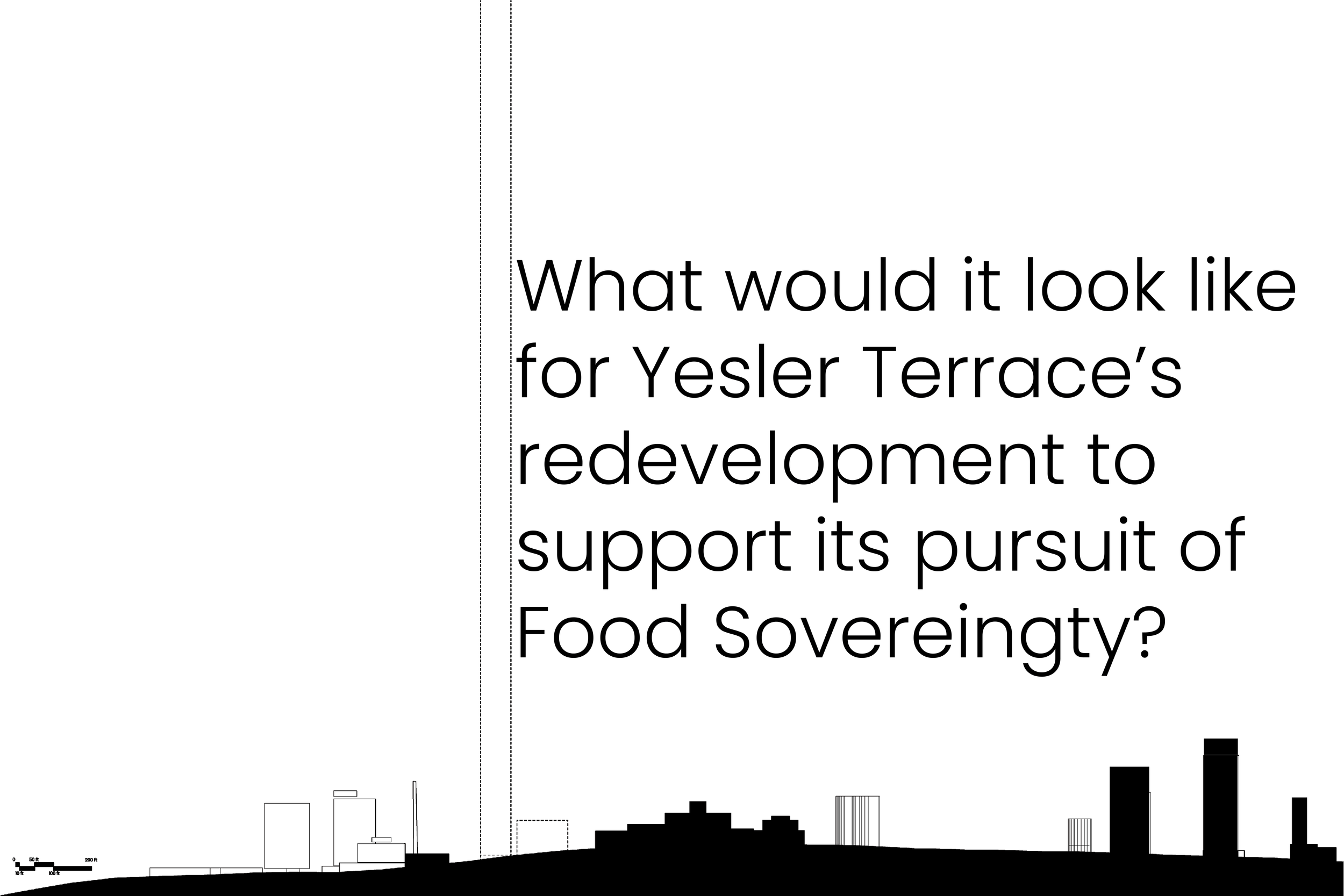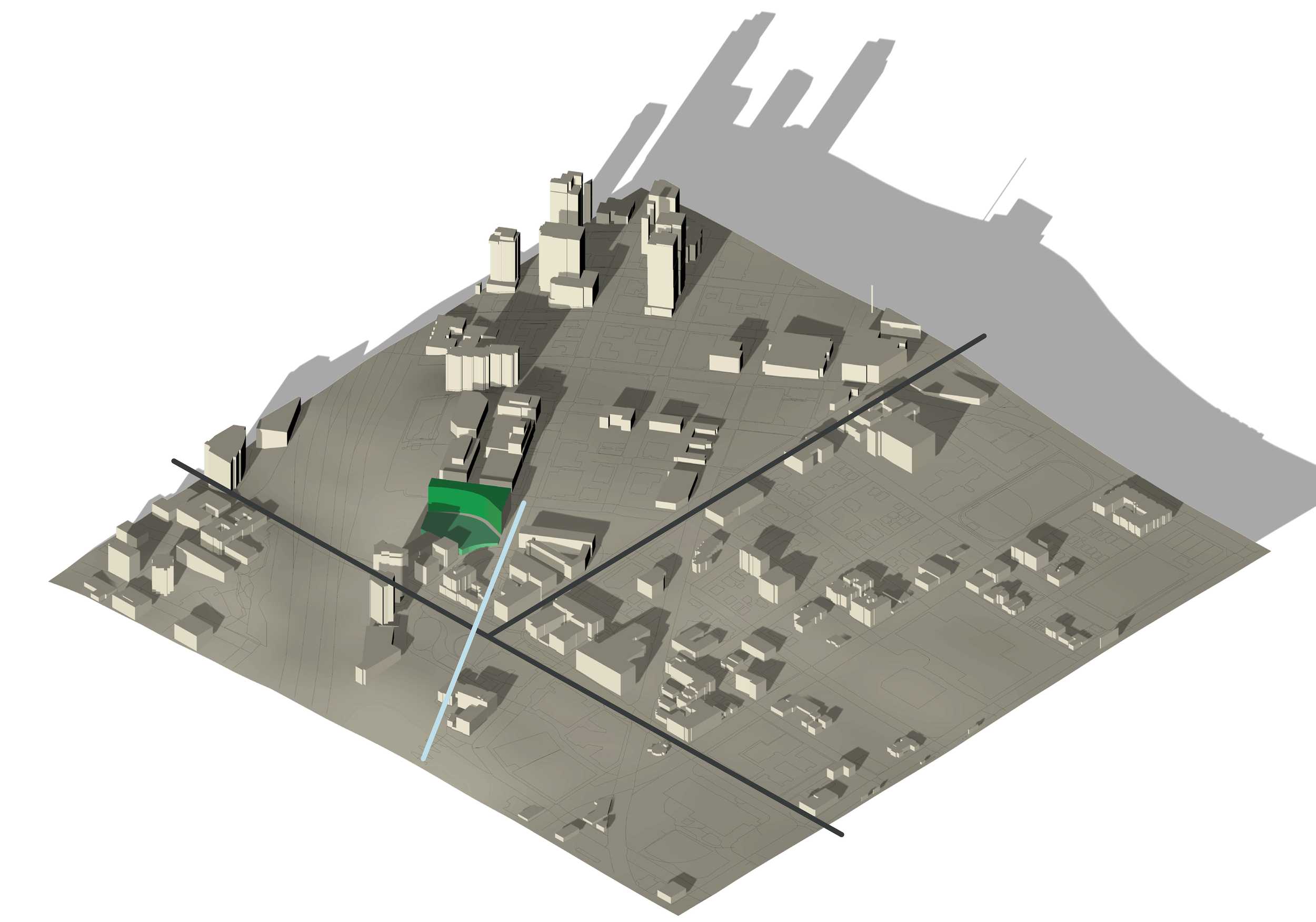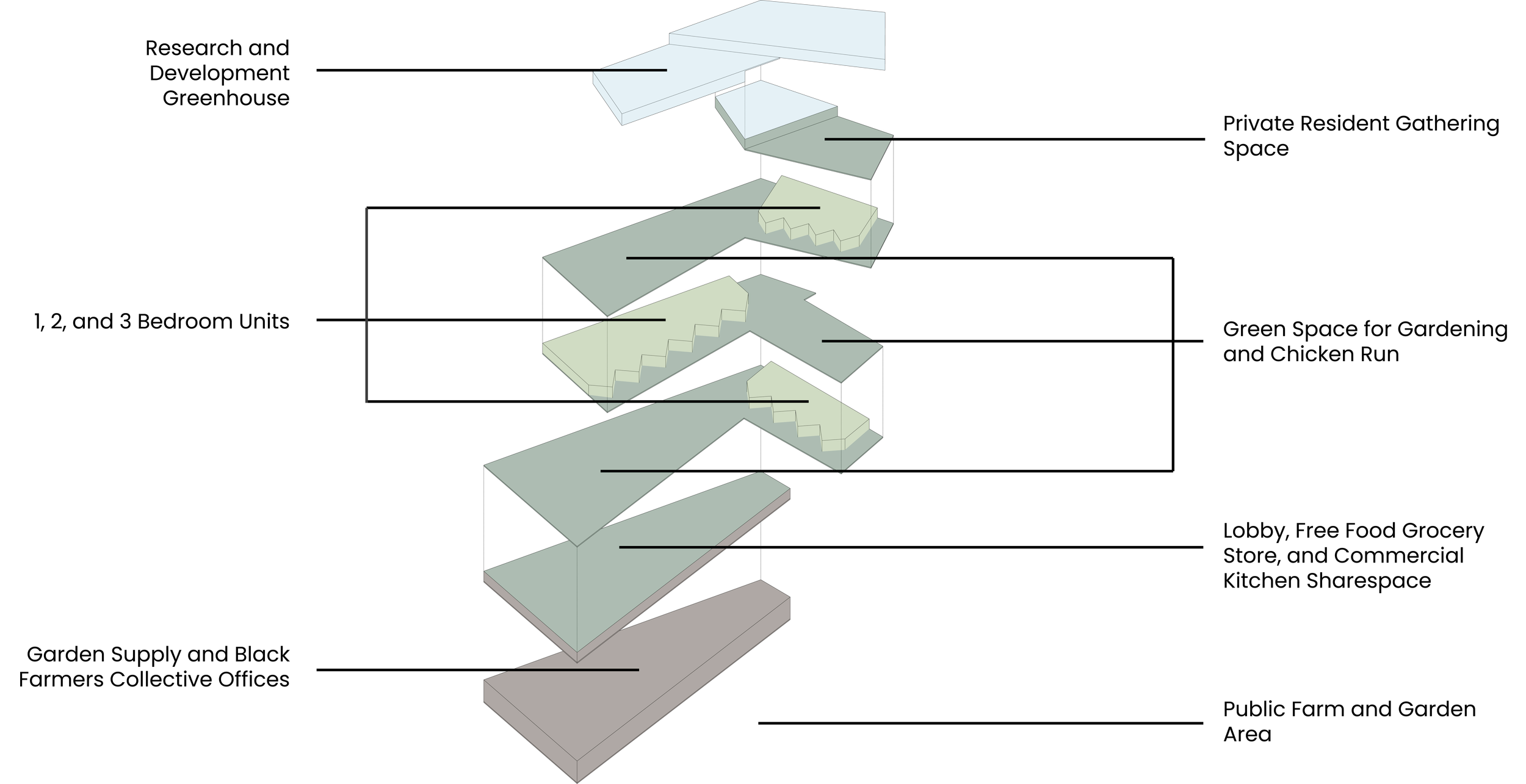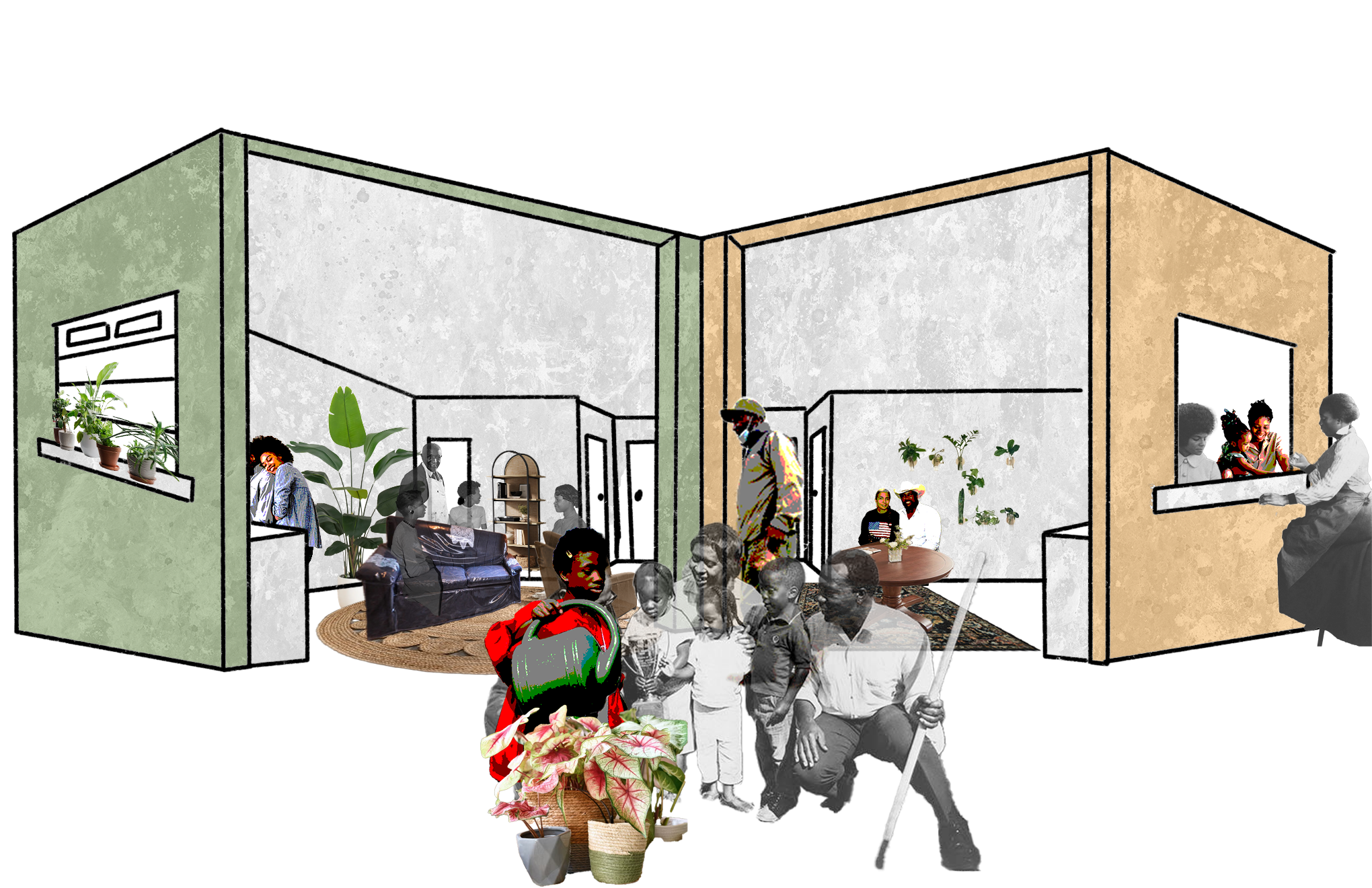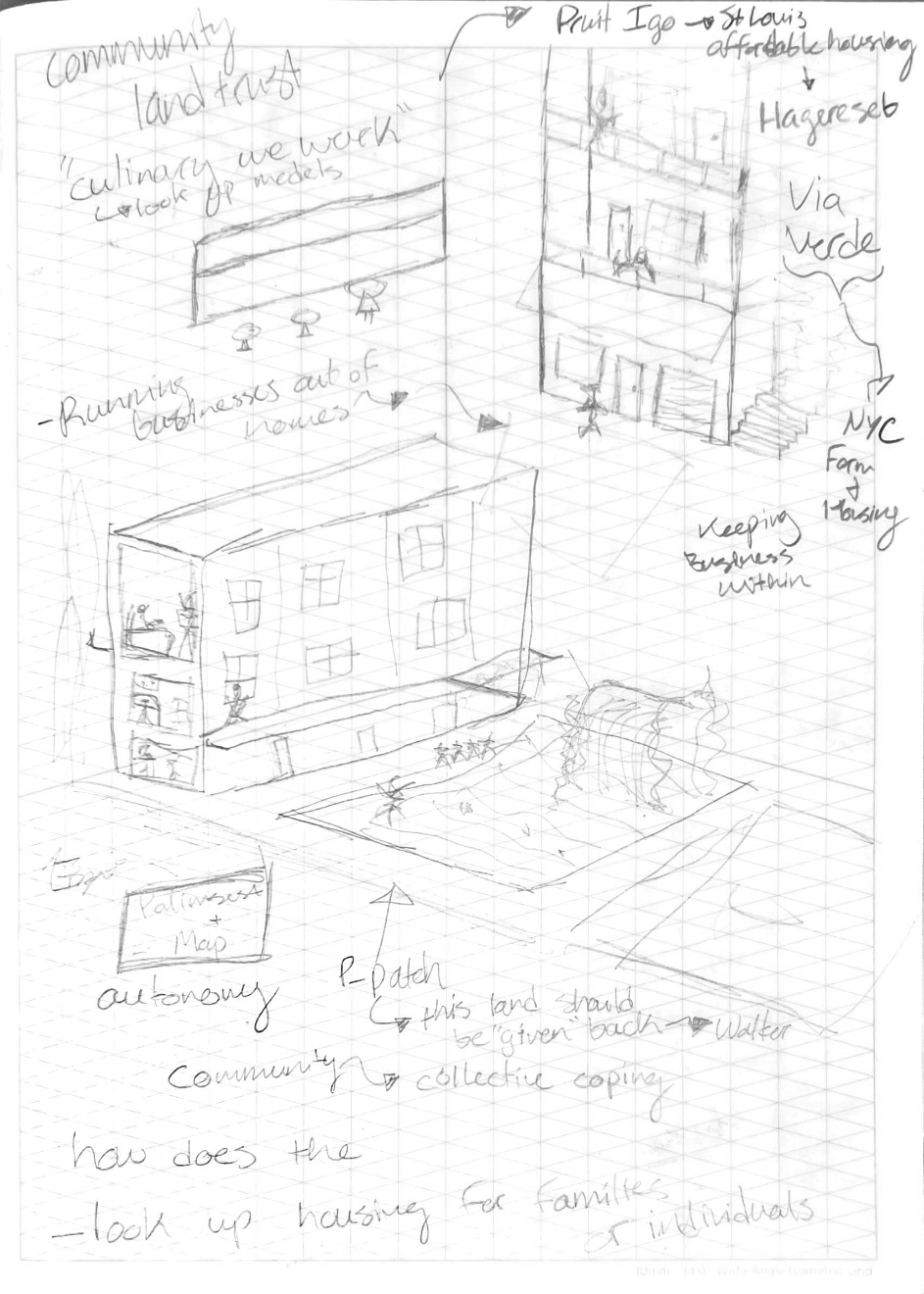
A Perennial Cookout
For the final project in my junior year at UW, I was assigned to research the Seattle neighborhood, Yesler Terrace, and identify a design question with a focus on housing that responds to the conditions present. We were also tasked with finding our site. I represented my historical and sociological research through several mapping collages, then moved towards what my concept would be in response to my design question, the concept being a Perennial Cookout, marrying the black American tradition and idea of placemaking through the cookout and the urban agricultural practices of Yesler Terrace, a historically majority black, mixed race neighborhood. What resulted was a proposal for a future of Yesler Terrace that could find foo sovereignty, and an Afrofuturist ideal where a residential community may foster innovation in urban agriculture and sustainable business through placemaking traditions that already exist.
Site selection was easy, as the last of its original Public Housing Project had just been flattened. It allowed for almost one full acre of farm and living space.
After learning about Yesler Terrace and its history of continual ‘urban renewal’ and displacement, I saw it’s state of change as a constant force that could be addressed. I also found another constant for Yesler Terrace, and it was its citizens always working with the land. In it’s most recent iteration, Yesler Terrace is fighting for independence from the food system that created it into a food desert.
I explored the concept of the Black American Cookout and how it could be represented through form.
Using cues from Solar Punk and Afrofuturism, the program includes farmland, but also prospects what else could aid in finding complete food sovereignty.
The housing utilizes sliding glass doors and large wall openings to interconnect the units. In theory, this fosters the feeling of the Perennial Cookout, where food, information, and childcare are shared amongst members of the community, and reflects the public/private yards once bestowed upon the residents of the original public housing project.

